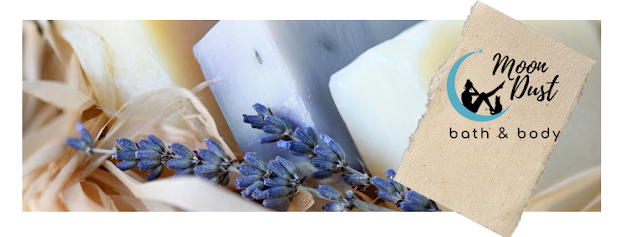Let's first discuss what lye is. There are two forms of lye for soap making. Sodium Hydroxide and Potassium Hydroxide. One of these substances is necessary to induce saponification. Saponification is basically mixing oil and water together, to create that magnificent thing called soap!
By the beginning of the 19th century, soap making was one of the fastest growing industries in the U.S. Rural Americans made homemade soap using a process from the Colonial times. They would save ashes from their fires for months to make the lye. The fat was saved from the butchered hogs until enough ingredients were collected to make soap. Thank goodness now a days the process has been simplified. And, we have more oils available. Mainly those from vegetables. We use pure quality, sustainable vegetable and nut oils. No animal lard is used.
So, are MoonDust bath & body soaps made with Lye?
The answer is... of course. Otherwise it is a detergent.
No lye, no soap. It's a chemical reaction that combines the ingredients to form soap and glycerine. Properly made, there is no lye left at the end of the saponification process.
Will it hurt my skin?
NO! Our soaps are properly made. Once the process of saponification is complete, the lye and oil molecules have combined and chemically changed into soap and glycerin. There is no lye present in the finished bars of soap or shampoo.
Today there is a heightened awareness of the possible adverse effects of many of the synthetic additives and chemicals in commercial soap. Which the large producers of soap use because synthetics are more economical. Educated consumers are turning to all natural products like those found at MoonDust bath & body. Even large companies are starting to advertise "natural ingredients" in their products. BUT BEWARE! The addition of one or two natural ingredients does not make a product "all natural.” It is virtually impossible for large companies to create natural, handmade soaps.
Also, there is some miss leading labeling going on. Always read the labels. Even if the label doesn't specifically say "lye" "sodium hydroxide" or "potassium hydroxide". It may however say one of the following. These words are usually used to deceive consumers. But soapmakers know that consumers are afraid of the word "lye." We believe our consumers are pretty savvy and the best practice is to educate.
I hope it is now evident that once the process of saponification is complete, the lye and oil molecules have combined and have chemically changed into soap and glycerin. Therefore, there is no lye (sodium hydroxide) present in the finished product.
MoonDust bath & body's products are made in small batches with top grade ingredients. Great Grandma used a raw egg to determine the amount of lye needed. Today we work with specialized charts and computer programs to determine the correct proportions of ingredients to use in the soap making process. Everything is measured each time to ensure a consistent product. Although I have to admit I have a creative soul, so I usually play around a little.
Old fashioned lye was made using hardwood ashes, a barrel or ash hopper, and rainwater. Holes were drilled in the bottom of a barrel. The barrel was placed on a grooved stone slab which rested on a pile of rocks. A layer of gravel was placed over the holes. Then a layer of straw, twigs, and sticks was placed on top of the gravel as a filter to prevent the ashes from getting in the solution. After filling a barrel with hardwood ashes, rainwater was pored through the ashes to leach out the brown lye liquid which would flow into the groove around the stone slab and drip down into a container.


Comments
Post a Comment